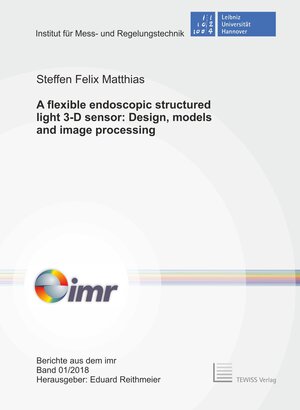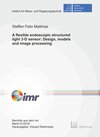
×
![Buchcover ISBN 9783959002004]()
A flexible endoscopic structured light 3-D sensor: Design, models and image processing
von Steffen Felix MatthiasDimensional metrology is an essential aspect of quality control in manufacturing and maintenance processes. With increasing miniaturization of machine parts, the applicability of existing tactile and optical sensors becomes more and more limited due to space constraints. In order to meet the growing demand for dimensional measurements in confined spaces, a new 3-D sensor based on the combination of the structured light measurement principle with endoscopy techniques is presented. Two high-resolution flexible imaging fiber bundles are used to connect exchangeable compact sensor heads to a camera and programmable pattern projector unit. By employing application-adapted sensor heads, the sensor can be utilized for a multitude of measurement and inspection tasks. Models for optical and geometrical properties of the sensor are evaluated, followed by the description of an automated calibration approach. In order to reduce artifacts from the unique optical properties of the imaging fibers, novel compensation techniques for structured light measurements are introduced. Measurements of reference objects show relative length errors of less than 1%. Furthermore, the sensor is capable of a full-field 3-D measurement rate of more than 160 Hz. A stitched measurement of micro-geometries, captured by continuous hand-guided sensor head motion, is shown as an application example. Results demonstrate the effectiveness of the adapted models and algorithms in reducing measurement deviations emerging from the limited image quality of the fiber bundles. Owing to the flexibility and accuracy of the sensor, it is a versatile novel tool for quality control in confined spaces.



